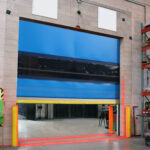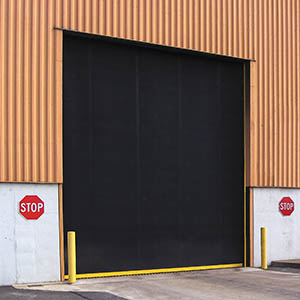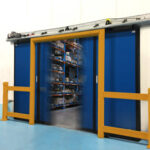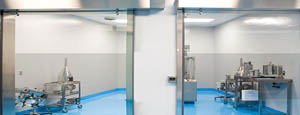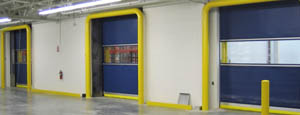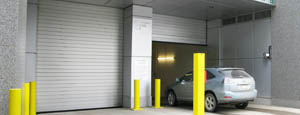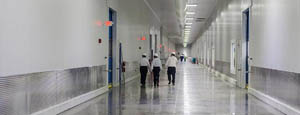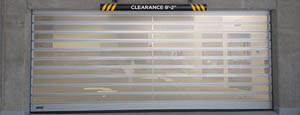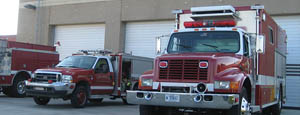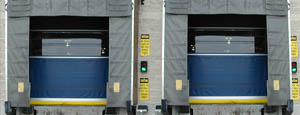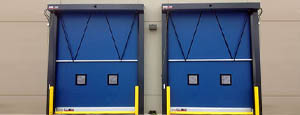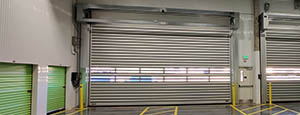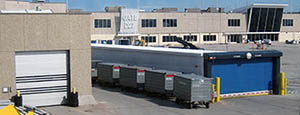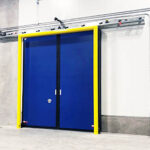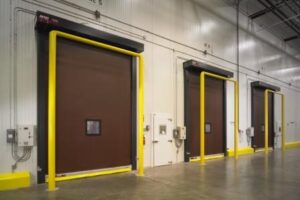
High-speed refrigeration doors are the unsung heroes of modern food and beverage processing and warehousing facilities. They help to keep products flowing smoothly while ensuring environmental separation, regulatory compliance and energy efficiency.
As food and beverage products move from the production line to packaging and distribution, these facilities must meet strict USDA and FDA quality standards and processing requirements. They include stringent regulations for cleanliness and ensuring separation between refrigerated and non-refrigerated areas.
Here’s how high-speed rollup doors enable food and beverage facilities to maximize their cleanliness, efficiency and regulatory compliance.
Characteristics of high-speed refrigeration doors
One of the key requirements for doors in food and beverage production and warehousing facilities is a fast open and close rate – up to 100 inches per second. This helps to minimize air infiltration between refrigerated and non-refrigerated areas.
It also helps to keep raw materials and finished products flowing smoothly throughout the facility and minimizes the potential for forklift-door collisions. If one does occur, the door should be designed so it can be reset quickly, minimizing downtime.
While these doors are closed, insulated panels provide an additional measure of protection against heat transmission. In addition, refrigeration doors are usually equipped with high-quality seals, which further limit air infiltration and enable them to withstand pressure and humidity differences.
Optionally, high-speed refrigeration doors can be equipped with heaters to ensure that moisture in the refrigerated air doesn’t freeze them shut.
Energy-efficient door designs and high-speed open and close speeds result in lower energy costs and longer life for the building’s refrigeration system. They are also a plus for companies that are focused on maximizing sustainability.
Ideally, refrigeration doors should be constructed of corrosion- and chemical-resistant materials. Door designs should minimize collection points and conventional seams, which can trap dirt and moisture. They also need to be easy to clean and sanitize, either by washdown or wipe down.
Finally, many food production facilities operate multiple shifts per day, which means door reliability is a must. If a door goes down, it can seriously impact the facility’s workflow and production.
How can high-speed roll-up doors enhance your food production or warehousing facility’s efficiency and productivity? Contact Rytec High Performance Doors today to discuss your needs.
See our selection of food processing and warehousing doors here.

